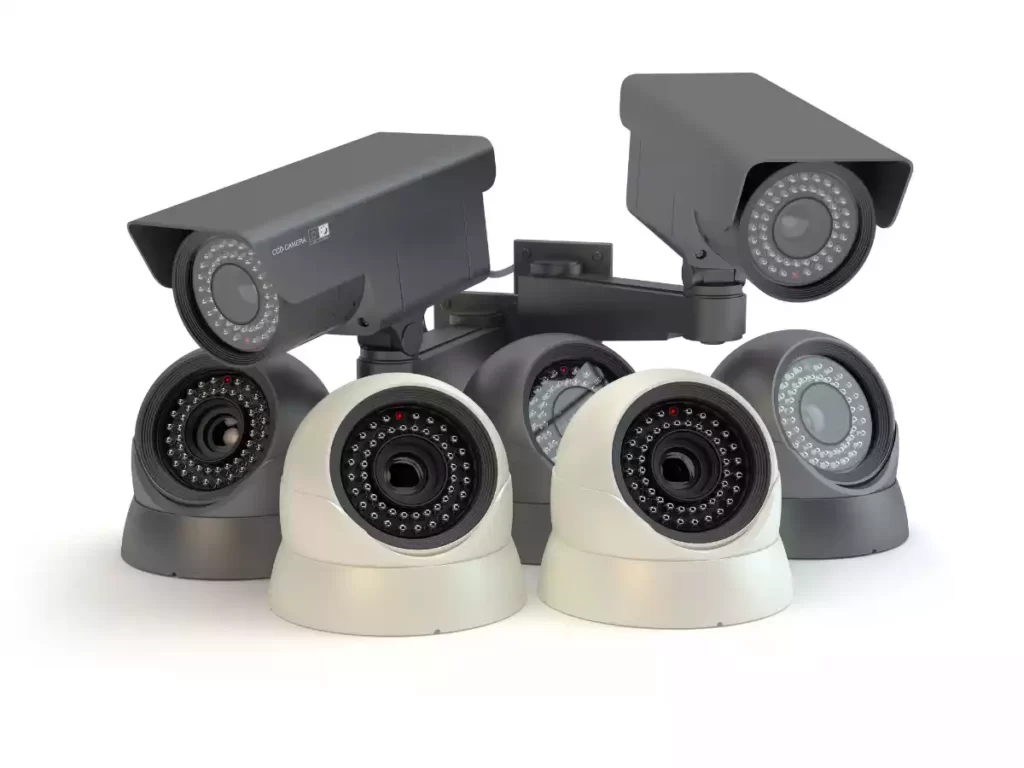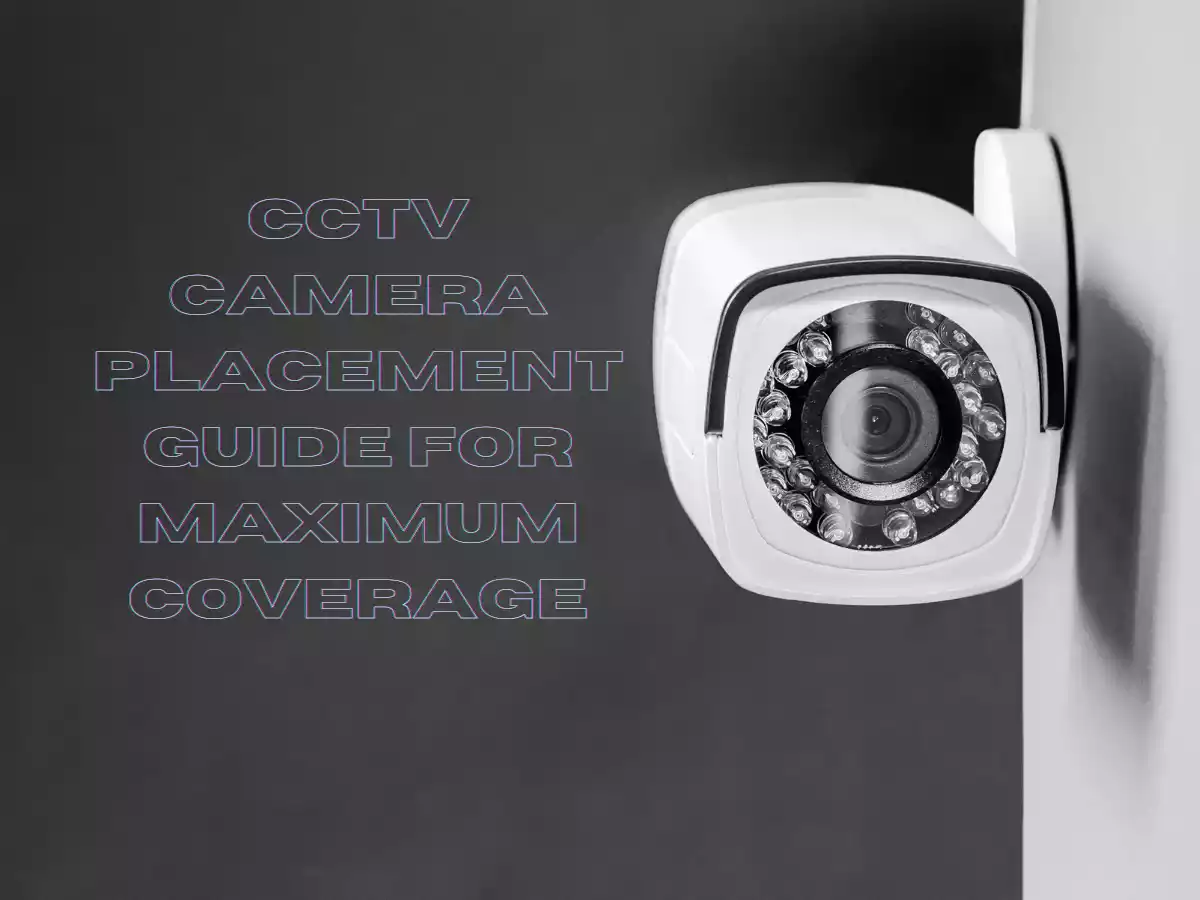Table of Contents
ToggleProper placement is crucial for maximizing coverage
The world we live in today is loaded with various security threats, and protecting our property and assets is a top priority. One effective way to enhance security is by using CCTV cameras. However, installing cameras is not enough; proper placement is crucial for maximizing coverage and deterring potential threats. In this blog post, we will provide a comprehensive CCTV camera placement guide that covers the key areas to cover, important factors to consider, and tips and tricks for optimizing placement. By following this guide, you can enhance the security of your property and feel more confident in your safety measures.
Different types of cameras and their recommended placement

When it comes to CCTV cameras, there are several different types to choose from, each with its own advantages and recommended placement. Here’s an overview of some of the most common types of cameras and where they’re best suited for placement:
Dome Cameras
Dome cameras are a popular choice for indoor surveillance. They’re clever, proven, and provide a wide field of view. They’re often placed in high-traffic areas, such as hallways, lobbies, and stairwells.
Bullet Cameras
Bullet cameras are typically used for outdoor surveillance. They’re weather-resistant and provide a long-range view, making them ideal for monitoring large outdoor spaces like parking lots, driveways, and entryways.
PTZ Cameras
PTZ (Pan-Tilt-Zoom) cameras are versatile cameras that can be remotely controlled to move and zoom in on specific areas. They’re often used in large outdoor areas, such as parking lots, stadiums, and public spaces.
Panoramic Cameras
Panoramic cameras provide a 360-degree view of an area and are ideal for covering large indoor spaces like warehouses, retail stores, and large offices.
Thermal Cameras
Thermal cameras use heat signatures to detect movement and are ideal for low-light or night time surveillance. They’re often used in outdoor areas, such as circle and fences, to detect potential intruders.
When it comes to placement, the ideal location will depend on the type of camera and the specific needs of your surveillance system. However, as a general rule, dome cameras are best suited for indoor areas with high foot traffic, while bullet cameras are best suited for outdoor areas that require long-range monitoring. PTZ cameras are ideal for large outdoor spaces, while panoramic cameras are best for covering large indoor areas. Finally, thermal cameras are ideal for low-light or night time surveillance and are often used in outdoor areas like circle and fences.
By selecting the right type of camera and placing it in the ideal location, you can create a surveillance system that provides maximum coverage and effective security for your property.
Factors to Consider When Choosing CCTV Camera Placement
When choosing the best location for your CCTV cameras, there are several factors to consider. These factors can affect the effectiveness of your security system and ensure that you have maximum coverage in key areas. Here are some of the most important factors to consider:
Lighting
Proper lighting is essential for effective CCTV surveillance. Poor lighting conditions can result in blurry images or make it difficult to identify people or objects in the footage. Consider the lighting conditions in the area you’re monitoring and select cameras with low-light capabilities or add additional lighting to ensure proper visibility.
Field of View
The field of view of a camera is the area that it can capture. The wider the field of view, the more coverage you’ll get. When choosing cameras, consider the size of the area you’re monitoring and select cameras with a wide enough field of view to cover the entire area.
Camera Angle
The angle of the camera is also essential. It’s important to angle the camera downward slightly to capture images of people’s faces as they walk by. This will also help prevent glare from the sun or other light sources. The angle of the camera will depend on the location and the purpose of the camera.
Distance
The distance between the camera and the area being monitored is also critical. Cameras that are too far away from the area being monitored won’t capture enough detail, while cameras that are too close can capture too much detail and make it difficult to see the bigger picture. A good rule of thumb is to place cameras so that they cover the entire area you want to monitor, without being too close or too far away.
By considering these factors, you can choose the best locations for your cameras and ensure that you have maximum coverage in key areas.
How to adjust cameras over time to ensure maximum coverage
Even after you’ve carefully selected and placed your CCTV cameras, it’s important to make adjustments over time to ensure that you maintain maximum coverage. Here are some tips for adjusting cameras over time:
- Regularly reviewing your camera footage can help you identify areas where coverage may be lacking. Use this information to make adjustments to the placement or angle of the cameras.
- Lighting conditions can change over time, so it’s important to adjust your cameras accordingly. If you notice that a certain area is becoming too dark or too bright, consider adjusting the camera’s exposure settings or adding additional lighting.
- Changes in the environment can also affect your camera’s performance. For example, if a tree or plant grows and blocks the camera’s view, you’ll need to adjust the camera’s angle or trim back the plants.
- Periodically testing your camera coverage can help you identify blind spots or areas where coverage may be lacking. Use this information to make adjustments to the camera placement or angle.
- As your property or surveillance needs change, you may need to add additional cameras to ensure maximum coverage. Consider using a combination of different camera types and placements to provide complete coverage of your property.
By regularly monitoring and adjusting your CCTV cameras, you can ensure that your surveillance system continues to provide maximum coverage and effective security over time.
CCTV Cameras Placement Tips and Tricks
Now that we’ve covered the key areas to cover and the factors to consider when choosing CCTV camera placement, let’s explore some tips and tricks for optimal placement:
Camera Height
It’s important to place your cameras at the right height for maximum coverage. The ideal height is typically between 8 and 10 feet off the ground. This height allows the camera to capture a wide field of view while still providing enough detail to identify individuals.
Camera Angle
The angle of your camera is also important. It’s important to angle the camera downward slightly to capture images of people’s faces as they walk by. This will also help prevent glare from the sun or other light sources.
Distance
The distance between your camera and the area you’re monitoring is also important. Cameras that are too far away from the area being monitored won’t capture enough detail, while cameras that are too close can capture too much detail and make it difficult to see the bigger picture. A good rule of thumb is to place cameras so that they cover the entire area you want to monitor, without being too close or too far away.
Avoid Obstructions
Be sure to place your cameras in areas where they won’t be obstructed by objects or other obstacles. This will ensure that you have an unobstructed view of the area you’re monitoring.
Use Multiple Cameras
Finally, consider using multiple cameras to cover a larger area. By using multiple cameras, you can ensure that there are no blind spots and that your property is fully covered.
By following these tips and tricks, you can optimize your CCTV camera placement for maximum coverage and effective security.
Conclusion
CCTV camera placement is an essential aspect of any effective security system. By choosing the right locations for your cameras, you can ensure that you have maximum coverage and visibility to help you deter potential threats and catch any suspicious behaviour. Factors such as lighting, field of view, camera angle, and distance are all important to consider when choosing CCTV camera placement. Additionally, it’s important to cover key areas such as entrances and exits, high-traffic areas, blind spots, and parking lots.
To optimize your CCTV camera placement, it’s important to follow some key tips and tricks, such as placing cameras at the right height, angling them downward slightly, avoiding obstructions, and using multiple cameras to cover a larger area. By following these guidelines, you can ensure that your property is fully covered and that you have the best possible security system to protect your assets and deter potential threats.




